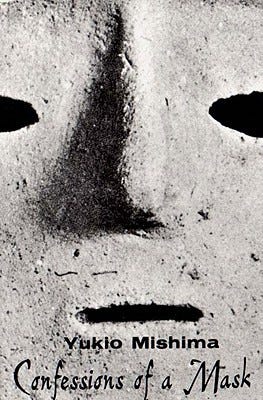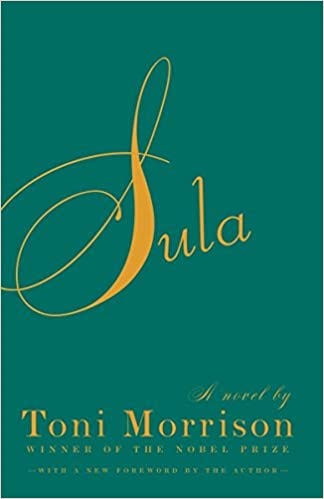Hello friends,
Thank you for being here. I appreciate you sharing this space with me today, whenever today is for you, wherever your here is.
My comps reading is going apace, although that pace is much slower than I’d like. Yesterday I finished Ceremony by Leslie Marmon Silko, #12 on my first list, and skipped past #13, which is The World According to Garp by John Irving because I reread it relatively recently and wrote about it a couple years ago for The Paris Review’s blog), and began #14, Midnight’s Children by Salman Rushdie.
Maybe it’s because I’ve been going through a hard time recently—harder than usual, harder than it’s been in a while—but as I’ve been reading, I’ve been noticing a pattern: madness, mad people, abound. Not only that, but they seem to be a necessity, either to the novel itself or to the social sphere within the novel (or both). I don’t have a theory developed, and I haven’t yet started reading papers about it, which, I’m sure, also abound1.
This isn’t the first time I’ve been intrigued by madness in literature. A couple years ago, I wrote about women’s madness and grief in literature for Bitch Magazine, and for Buzzfeed I wrote about some books that depicted mental illness realistically as well as going through some of the history of how madness has appeared in fiction. In that Buzzfeed piece, I wrote:
It is a rather modern construct, to separate mental illnesses into different categories and symptoms with the names we’re familiar with now, like schizophrenia, depression, or anxiety, as opposed to vague and ableist words like “insanity” or “madness.” We’ve come to view mental illness as an identity marker as well as a biological fact.
[…]
Yet mental illness is still used as a plot device, whether it’s in the twists of a psychological thriller where a woman is actually a psychopath all along (think Gone Girl by Gillian Flynn), or whether it’s as an attempted humorous character whose crrrazy! antics are the punchline (think of the narrator’s mom in Jonathan Tropper’s This Is Where I Leave You). To be fair, there’s a fine line between demonstrating what mental illness is actually like and pathologizing every experience of pain so that it fits into a diagnosis.
I don’t exactly disagree with what I wrote then, and I certainly don’t disagree with the conclusions I came to about the particular books I was discussing and their realistic depictions of mental illness in the contemporary context.
I do, however, question the ways that I defined the use of madness in literature, as well as my conclusions about the words “insanity” and “madness,” both of which I comfortably use to refer to myself (along with the word “crazy”) and which I have seen plenty of other mentally ill people use as well (see Sarah Fawn Montgomery’s excellent, moving memoir, Quite Mad). I would never apply these labels to anyone else without their consent, but for myself, at least, madness is a useful term precisely because it’s so broad, because it addresses both the internal and the external, encompassing the feeling of madness (which can take myriad forms), the behaviors of madness (which are identifiable due to social norms, and thus may be different in different contexts and cultures) and the ways in which the mad are treated and categorized as “other” by normative, “sane” society. The term also allows for one of these to be present while the other is not—a madwoman in the attic might be sane if she weren’t locked in the attic; a CEO standing in a board room might feel completely bereft of their sanity but, if they are performing their role adequately, their outward success might be all that matters to those around them.
It’s the social role of the mad that I’ve been finding really interesting in the books I’ve been reading so far, although there are different manifestations of this. In Confessions of the Mask by Yukio Mishima, there is no overt discussion of madness, but the implication is that the narrator’s abnormality—his attraction to men but more specifically the violence done to those men that he fantasizes about—is a kind of madness, one that must be hidden behind the titular mask. This is then contrasted by the normalization of a very similar kind of violence during World War II. In other words, abnormality is contextual and relies on social definitions and norms. There must be a standard, a normal, that creates an abnormal.
But what if the other way around is true as well? In To Kill a Mockingbird by Harper Lee, Arthur Radley, whom the children call “Boo,” is a man who due to unclear reasons was locked into this house by his father and, either by force or by choice remained, there for the better part of his life, making very few appearances in the world outside. The rumors the children exchange about him, the stories they exaggerate and add to, often cast him in a violent role. His violence, real or not, is thus understood by this children to be the abnormal, an example of what is wrong, what is to be avoided. By the end of the book, of course, we know that the real violence of Maycomb County is white supremacy, the violence of hypocrisy and racism and complacency. But the social role Radley fulfills for the children is, really, what he fulfills for the adults too—if they aren’t overtly violent, or if they don’t need to be locked away, then surely, they too can believe themselves to be good.
The Bell Jar by Sylvia Plath is, of course, all about madness, the unexpectedness of it, the strangeness of it, and, often, its extremely uncouth nature: I forgot, until my recent reread, that Esther stops bathing at one point, deliberately relishing in her smell—something that happens, by the by, in the first 50 pages of Midnight’s Children as well, when Tai the boatman decides to stop washing and begins to lose business, especially English business, as a result. But one of the most important aspects of The Bell Jar in my opinion isn’t, actually, Esther’s containment by the bell jar of her depression or psychosis. It’s her observations about the madness of her contemporary post-war American society, her ability to recognize all the oddities of human interactions, of corporate hierarchies, of the whims of the famous and semi-famous2, of the expectations put on women and sex and marriage. She narrates these observations both before and after the onset of her madness, but I am left to wonder whether the latter works, narratively, to undermine or underline the former. Maybe both.
In One Hundred Years of Solitude, madness is relative—many of the family members behave in ways we might consider confusing, strange, or mad, but are not given that definition. The family’s patriarch, José Arcadio Buendía, one of the founders of Macondo, in which most of the novel takes place, could be considered to be mad from the very start: Isn’t it madness, to take one’s wife and a few friends and explore unknown territory in order to found a new town? Isn’t it madness to dream, as he does, of unlocking the secrets of alchemy and immortality? Isn’t it madness to try to get rich with magnets or to envision something like trains before they exist? He tries and fails at one invention after another, but also succeeds in protecting his family and community from various misfortunes that befall them. He is only declared mad when time seems to break open for him, when he recognizes the past and present and future being less dissimilar than they seem to many of us, and it is only then, after trying to destroy all the things in his laboratory, that he’s declared mad and is restrained and tied to a tree under which he spends the rest of his life. Yet he doesn’t disappear from the narrative. Instead, he’s cared for and talked to by various family members, and becomes, eventually, almost part of the natural landscape, existing like the chestnut tree he is tied to or the ants that eat him. In this way, he becomes symbolic of the novel’s thematic recurrences, a living witness to the repeated names and tragedies and moments of joys that collapse the linear ties between new and old, modern and ancient, future and past, into something rounder, like a song’s chorus, emerging again and again with the occasional lyric or key change.
Sula by Toni Morrison is the book that really got me thinking about this, about how ubiquitous the mad are in these books and how apparently necessary they are to the milieu in which they appear. Shadrack, the first character to be introduced in the novel, is a World War I veteran suffering from battle fatigue who founds what he calls National Suicide Day, on January 33: “He knew the smell of death and was terrified of it, for he could not anticipate it. It was not death or dying that frightened him, but the unexpectedness of both. In sorting it all out, he hit on the notion that if one day a year were devoted to it, everybody could get it out of the way and the rest of the year would be safe and free…On the third day of the new year, he walked through the Bottom down Carpenter’s Road with a cowbell and a hangman’s rope calling the people together. Telling them that this was their only chance to kill themselves or each other.” Shadrack, in trying to control death and dying, in trying to control chance and violence, in trying to face his fears publicly, with a collective experience, is viewed as mad. Later in the book, Sula, having left and returned, is considered evil for her own infractions on the social order of the Bottom. But both of them, Shadrack and Sula, are deeply necessary to the people around them. Their outre behavior makes others wish to do better, to prove themselves saner, more good, than either of these outsiders in their midst.
Ceremony, by Leslie Marmon Silko, also features a battle fatigue-ridden protagonist, Tayo, who is Pueblo and white and has been shamed for the sins of his fathers, or, really, his mother, who had the audacity to become impregnated by white man. Tayo’s own madness, the traumas he suffered and inflicted during World War II when he was fighting the Japanese, is viewed as pathological by the US army, who keep him in a hospital for some years. But his road to sanity is also viewed as pathological, because it doesn’t match a capitalist, Western idea of a return to wellness. Where Tayo finds sanity—in following and improvising and adding onto the steps of a ceremony begun by a medicine man, Old Betonie—the US army, as well as his cousin-brother, Rocky, who died beside him in the war, would have seen superstition, the old ways, unscientific. Where Tayo finds truth and beauty—in returning the cattle stolen from his uncle and father-figure Josiah, in the woman Ts’eh he meets and loves along his journey, in reveling in and being part of the natural world around him—his friends see betrayal, because he no longer drinks with them, no longer shares war stories, no longer clings to the violence of a time that none of them can ultimately let go of. Tayo’s madness is a main driver of the novel, much like Esther Greenwood’s, and thus necessary to it.
As I said, I don’t have a clear or cohesive theory tying all these narratives of madness together (do you?), and I’ve cut out some books here because this missive is extremely lengthy already; maybe I’ll share those thoughts another time. But I’m fascinated by how ubiquitous it is, this madness, how apparently necessary to plot and characterization, and maybe to something outside of books too. Maybe we need the mad to know we are sane. Maybe we, the mad, need sane people, and sanity, less than we’ve been taught to.
Madly yours,
Ilana
There I go again, qualifying every opinion I have because, certainly, someone else has thought of it, written about it, mastered it, made a career off it, before. While I want to and do respect lineages, the way my mind curls up like an armadillo whenever I consider how others before me have thought of the same things is…not conducive to thinking.
see: the man who eats his leafy salad with his fingers, one leaf at a time
which I will henceforth be commemorating as well, for various reasons









Ilana, thank you for writing this. While reading, what I also thought about was how literature using the environment as a site for "madness." What I mean isn't necessarily the social environment (how society restricts or expands our understanding of sanity/insanity, and subsequently how that's expressed in literature), but the role the physical environment (built or natural) plays in our understanding of that line. I'm thinking about things like "jungle fever" in Heart of Darkness; I'm thinking about Ahab in Moby Dick (sure, his complete obsession/possession of the whale is "insane," but one also gets a sense that the ocean itself plays a role in that madness); I'm thinking of the absurdist Japanese drama/novel, Woman in the Dunes, where sanity/insanity are reversed in the environment: the teacher, stuck in a dune, slowly becomes "sane" (equates to acceptance & complacency) in an absurd (thus "maddening"?) physical environment and situation.
Speaking of built environments, what about Kafka's bureaucratic labyrinths, or modern day corporate office/work place novels that equally seem to influence the madness the characters express and/or feel?
Like you, I don't have any cohesive theory, just some thoughts. In the end, I'm stuck in a three million square mile open air insane asylum called the United States of America, suspended and floating on a giant rock in the middle of nowhere headed toward oblivion (trust me, that's more comforting than one might think to me).